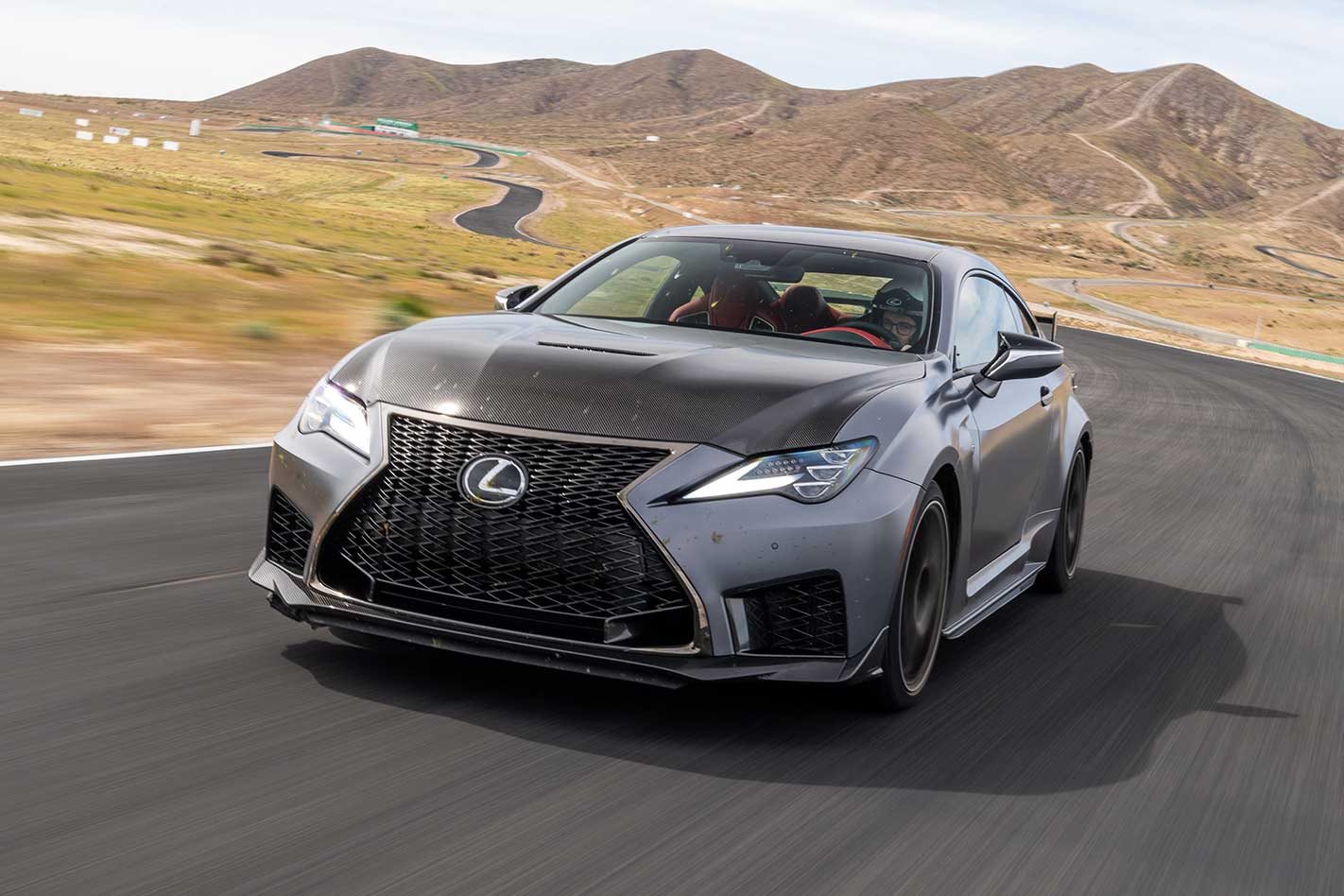Traditionally when you think of a track car, you imagine something low and squat to the ground, covered in carbon fibre, riding on sticky track tyres, with a clear and uninterrupted exhaust note and rocks audibly tickling the underbody in lieu of sound deadening being removed.
Fixed-back bucket seats, Alcantara in excess, perhaps a half-cage and adjustable suspension. And, if you’re really lucky, maybe some choice vents, some springy Lexan windows, a giant fixed rear wing and perhaps a jutting front lip.

Before we get to the Track Edition treatment, a refresher on the RC itself. Make no bones about it, this is an old car underneath and with this facelift, Lexus has popped it in the microwave for another 90 seconds. Parts of the RC platform – which is a current GS front and a current IS rear bolted together with the mid-section of the old IS – date back to 2005.
Same is true of myriad other components including the eight-speed automatic transmission, but one bit we’d be happy to have around for another 12 years would be that engine. Yes, the 2UR-GSE 5.0-litre, all-alloy naturally aspirated V8 might date back to the IS F’s debut in 2007, but what’s the saying, if it ain’t broke?
Indeed, if natural aspiration wasn’t becoming a ‘unique selling point’, we’d all rubbish the 2UR-GSE for being a breathless old nail. The compression ratio has crept up over the years, to now 12.3:1, but power of 351kW and 530Nm is unchanged in this facelift, and nothing particularly special in the specific power stakes as Ford will sell you a naturally aspirated 5.0-litre V8 Mustang with almost the same power/displacement as the RC F, and for a lot less money.
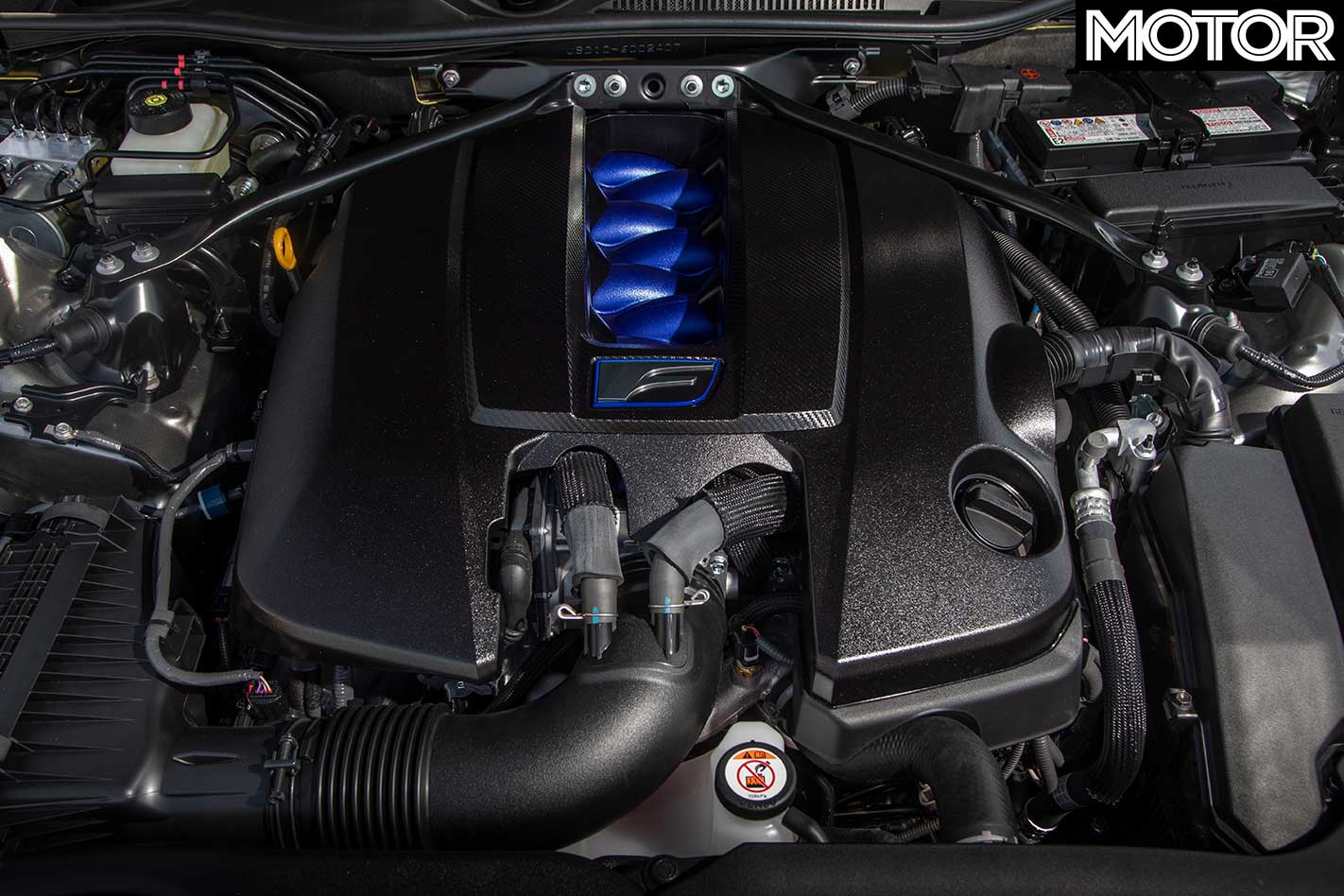
Instead of tipping development dollars into the deep, black hole that is getting more power from an atmo engine, Lexus instead did what it needed to do to make the 5.0-litre meet Euro 6 emissions regulations (it does, impressively) and focused instead on weight. Of which there was plenty to work with.
This is where the Track Edition comes back in. Turning to its experience with carbon fibre, gained from the LFA, Lexus has lavished the beautiful glossy black weave all over the Track Edition – the bonnet, roof and a new, gorgeous, almost artful fixed rear wing are all CFRP.
The wheels are spindly, forged BBS items hiding huge carbon-ceramic brakes (together reducing unsprung mass by 25kg), while the exhaust is now made from no less than titanium (saving 6kg), the tips with the trademark blue-purple discolouration.

Lexus has also ditched the computer-controlled electronically locking ‘TVD’ rear differential for a simple Torsen mechanical LSD, saving approximately 35kg alone. With other small gains like a lighter, manually adjustable steering column and a newly hollow driveshaft, the RC F Track Edition’s weight has dropped 65kg to 1715kg – less than, the Japanese engineers will smirk, rivals like the Mercedes-AMG C63 S Coupe or Audi RS5 Coupe.
The Track Edition treatment improves the RC F’s power-to-weight from 197kW/tonne to 204kW/tonne, equivalent to another 12kW from the engine, forgetting all the other gains made in ride, handling, braking, economy and consumables likes brakes and tyres. More so, though, the gains are harder to measure in moving the RC F’s weight distribution in the right direction – backwards and downwards – with a focus on crucial unsprung weight.
The torque converter auto now has launch control, too, the 0-100km/h time a claimed 4.3sec, two tenths quicker than the old RC F. The Track Edition also uses a passive damper set-up in place of the adaptive units of the more plush ‘base’ RC F.

Together with the new headlights – featuring DRLs that look like a swish of a samurai’s sword – the weight-saving measures are highly visible from the outside, creating a busily styled, but undoubtedly aggressive Japanese sports coupe with clear motorsport DNA – and one with some serious on-road presence.
Today, though, we’re only driving it on a track, which does seem fitting for a Track Edition. Willow Springs, about an hour and a half from Los Angeles, USA (Lexus is ostensibly more an American than Japanese company) is one of the oldest racetracks in the States. Its configuration has not changed since it opened in 1953, four kilometres long and nine turns, a former test track of CART during its halcyon days of the 1980s and ’90s.
This is a fast track; it’s a bit like combining the speed and long corners of Phillip Island with the tired, bumpy surface of Calder Park. And then made to look like a giant version of Wakefield Park dropped on the side of a bigger hill, in a dry and desert-like environment. Like Alice Springs.
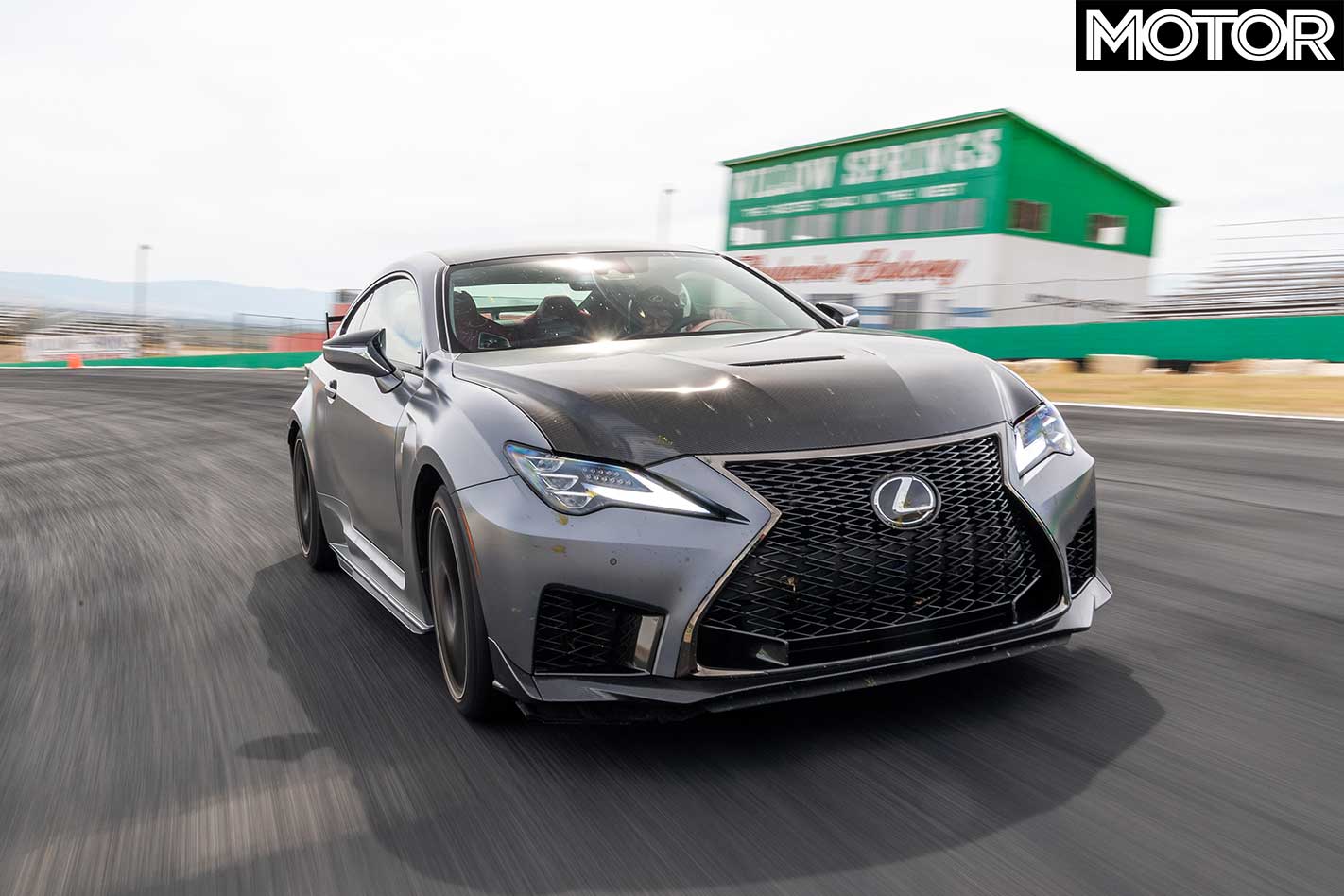
Sitting in the RC F Track Edition is a bit like going back in time, the loud red and black treatment reminding us of the days Ford and Holden used to do the same with its own hotted-up Falcons and Commodores, many moons ago. There’s a curious blend of Toyota-derived bland switchgear and fonts combined with youthful, PlayStation-esque TFT graphics like the tachometer and instruments. And it’s just as well we’re on a track today and don’t have to interact, at all, with the notoriously fiddly infotainment system.
Blasting out of pit-lane, we are liking the RC F Track Edition almost immediately. Passion and effort is obvious everywhere, from the interior and exterior styling to the enthusiasm and noise of that atmo V8. If the RC F Track Edition was a person, it’d be very easy to like the cut of their jib.
The enthusiasm extends on track. The RC F feels energetic and agile from the off – a poofteenth more than what we remember of the old RC F – accelerating with a deep, loud, V8 intake note bubbling up as if from within the dash itself. In this age of turbochargers we forget that intake noise used to be a thing. The RC F sounds great, a highly strung, high-revving bellow making it in no way surprising the fact the engine was co-developed by a motorcycle company, Yamaha. This is indeed an engine that wants, and needs, to rev.
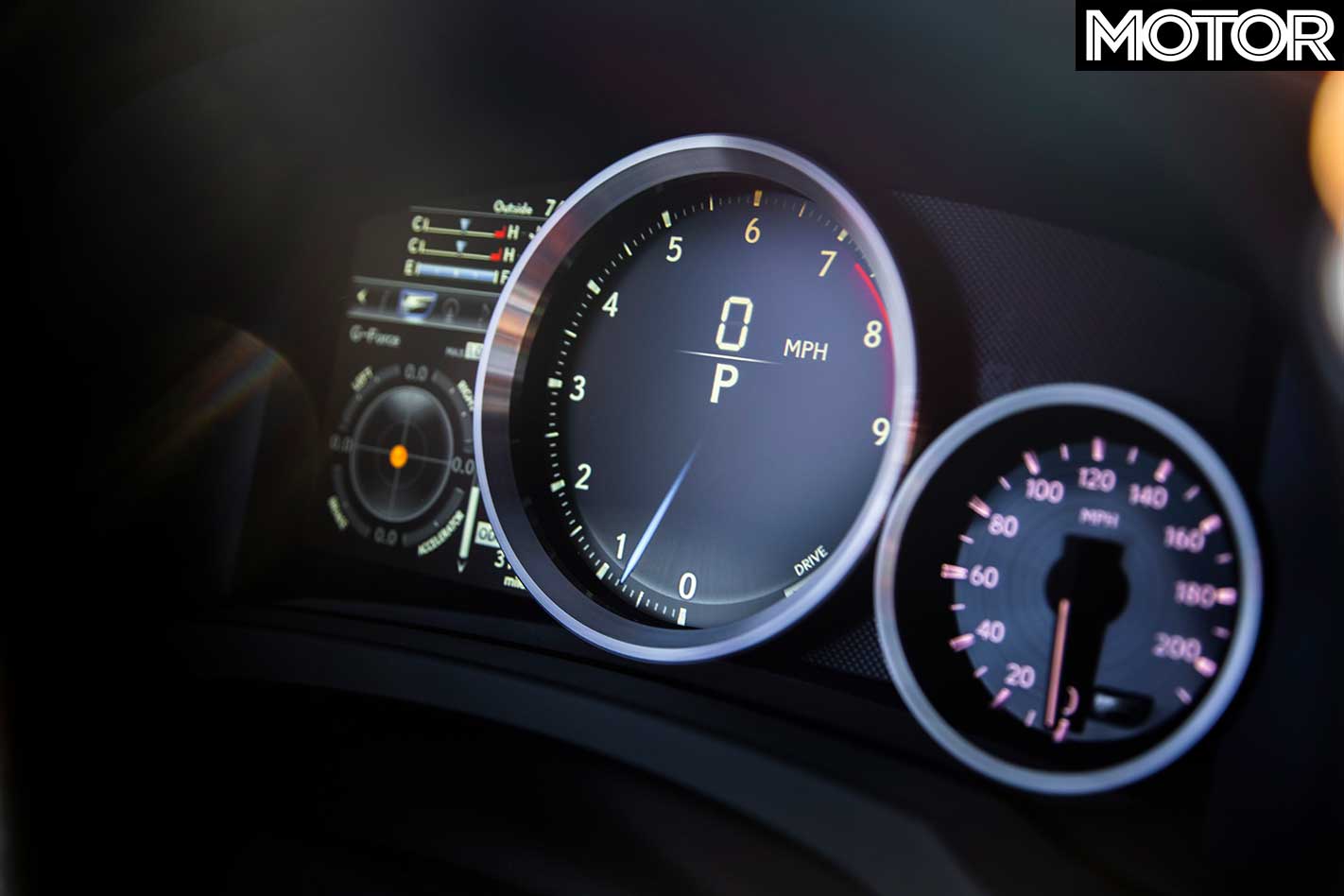
First big brake application and the carbon ceramics bite hard with confidence, although there is straight away the impression you need to be sensible about where you’re starting to brake from. The RC F Track Edition, with its free-revving engine – as if taken from a lighter car – can lull you into a false sense of security about how much it weighs.
It’s the grip of the new, specifically developed Michelin Pilot Sport 4S tyres that creates this sense of complacency. Lateral grip levels are through the roof, concealing just how much weight is moving about and making the RC F feel, mid-corner, about 100kg lighter than it is. Hence the need to remind yourself, as you barrel down the straight, that banzai braking is not as possible as the lateral grip of the last corner has led you to believe.

Front end? Does the job. The steering is quick of rack, sharp and eager, but typically numb and a bit forgettable to use. The transmission has come a remarkably long way, quick up the gears and not too bad back down them, but this is no twin-clutch ’box. Fortunately, it is super smooth at regular speeds.
Aero is not a thing on this car as well. The rear wing does create some downforce, Lexus says, although you’d be hard pressed to notice anything other than some extra stability at top speed on a German autobahn. Unlike something like a GT3 RS, which makes Cup Car-rivalling downforce, you are not emboldened to ‘hold it flat’ through faster corners where your brain is telling you not to. In the Track Edition it is still wise to listen to that voice.
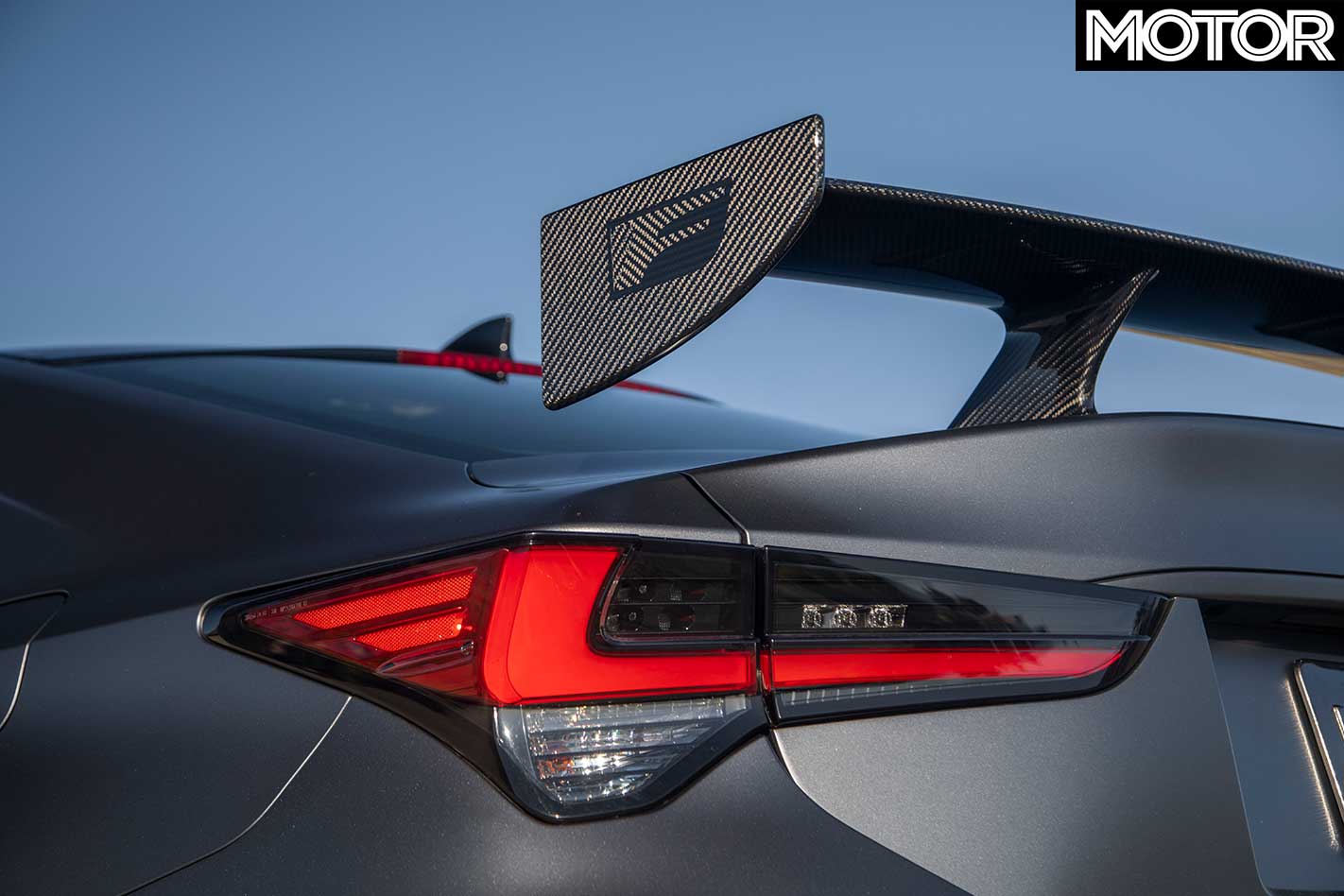
Belting around in the Track Edition, a few other things become apparent. First, longevity – on a warm day the RC F never gets upset, letting you go lap after lap at full noise, no issues whatsoever. The carbon ceramics hold up well, and no doubt the whole shebang is helped by a newly fitted transmission oil cooler. If a so-called Track Edition must be able to spend a whole day, no sweat, at a track day, this one ticks that box.
Another thought is the attitude you must bring to this car. It has a plush, full leather interior – and it is not a Porsche 911 GT3. Nor is it, frankly, a car the experienced track day addict buys to chip away at their PB, as the RC F’s omnipresent weight leads it to wilt if you are looking to spend most of your time at the very ragged edge.
No, it pays to keep in mind the philosophy of this car’s creator, which we are told about between sessions. Yuuichi Tsurumoto, chief engineer, likes throttle-steer, is big on playfulness, a classic-feeling mechanical limited slip diff, old-school passive dampers and in creating a car for someone who is new to track work. And the RC F Track Edition fits that bill easily.
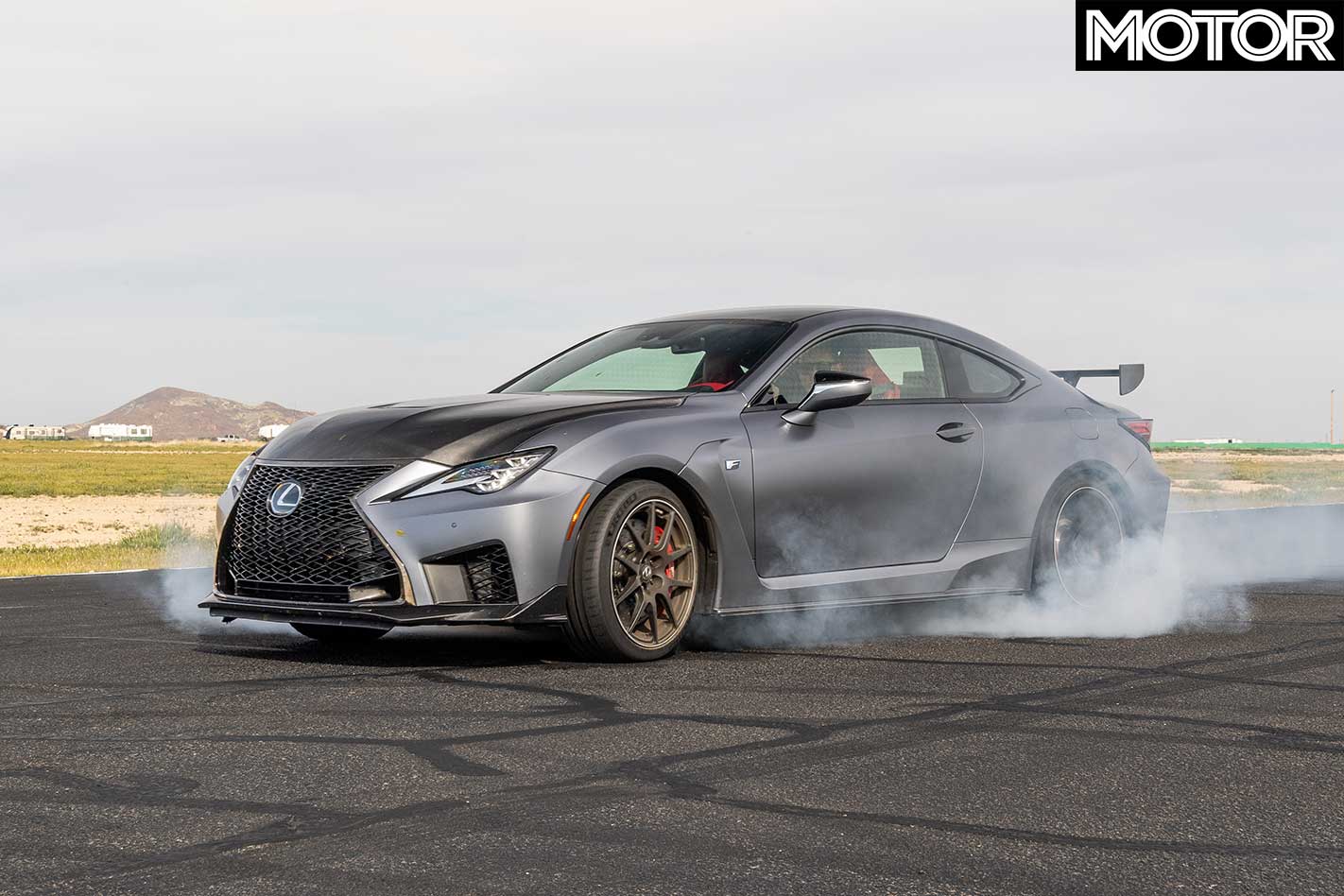
This is one of those cars that works hard to please you, and you end up liking it, even though you know it’s not objectively the best gadget around. It’s fast, but it doesn’t turn the knuckles white under acceleration like a BMW M4 or AMG C63, nor does it fry its rear tyres as easily as these cars.
In fact, on anything but a flat, or downhill corner, you will need to work fairly hard to overcome the grip of those Michelins to get the RC F Track Edition sliding, where a C63 will do it not even with full throttle. Undoubtedly, though, it’s a fun car, indeed playful, and it says much that we did not turn down a single opportunity to get another go in the RC F Track Edition around Willow Springs.
Another remark worth making is a sacrifice you may have to make in order to access the enhanced circuit ability of the Track Edition – ride quality. It seems Japanese engineers can still be a bit old school in approach, when it comes to increasing the sportiness of their sports cars, in that they aren’t shy to simply crank up the spring rates.
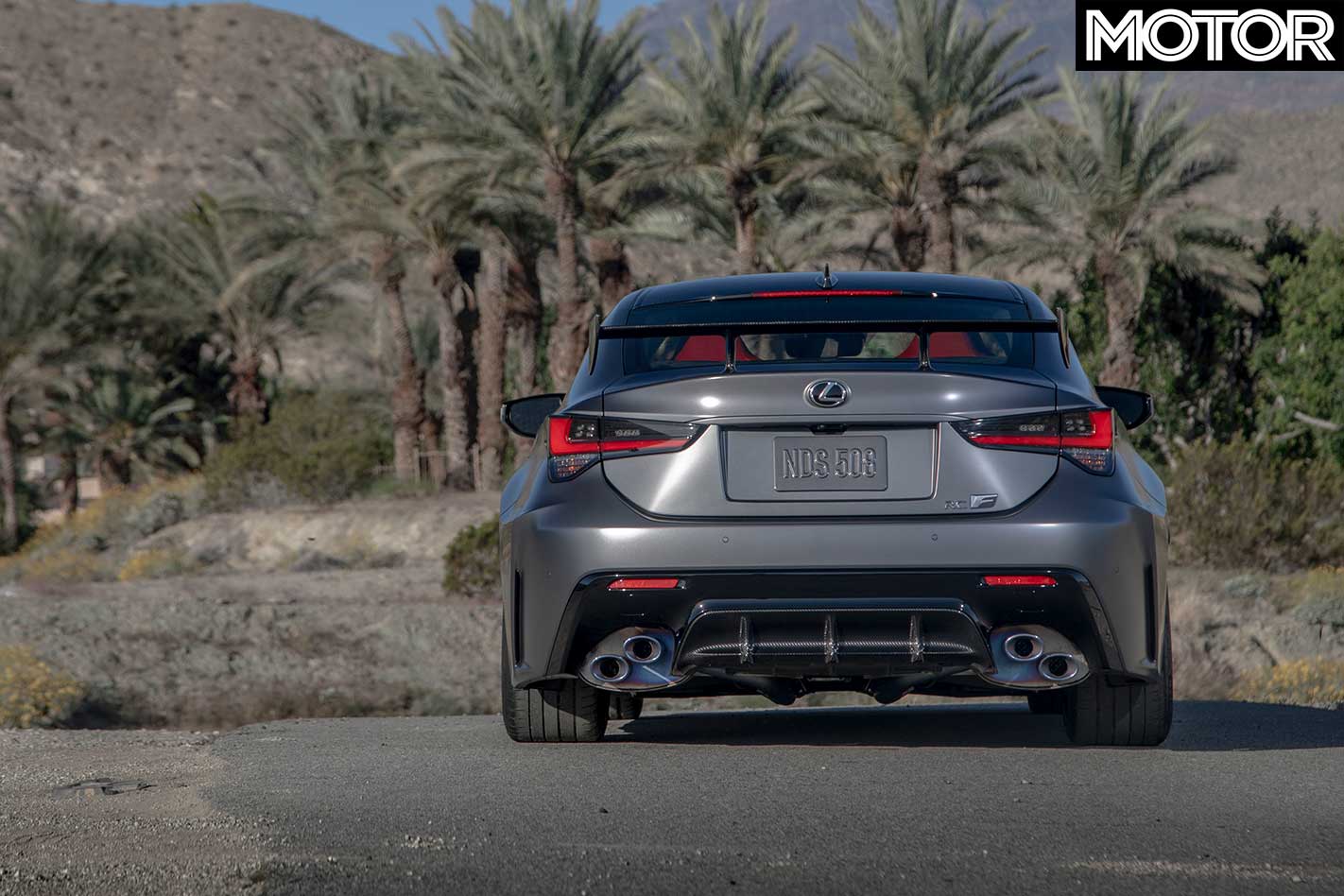
Until we drive it on the road we can’t say for sure, but this seems true of the Track Edition, to the point that we almost – guiltily – enjoyed more a base RC F that Lexus also let us drive on track. Its adaptive dampers worked the bumpy Willow Springs surface more confidently, even though its portliness was more obvious and the stock brakes were completely not up to the task. Undoubtedly, the RC F Track Edition would prefer a smoother track like Phillip Island.
Is the RC F just a sumo trying to be a ninja? No. It has proper track credentials, but it bespeaks the car’s actual intended purpose that the suspension is not a bit adjustable – a la other track-marketed cars – and Lexus does not offer something like a Michelin Pilot Sport Cup 2 as an option. Your mates in M4s and C63s might give you a hard time about buying an RC F Track Edition, but with less than 10 coming to Australia, the usual twin-turbo German coupes may as well be invisible parked next to the angriest Lexus since the LFA. And for some, that’s all that matters.

FAST FACTS 2019 Lexus RC F Track Edition BODY: 2-door, 2-plus-2 seat coupe DRIVE: rear-wheel ENGINE: 4969cc V8, DOHC, 32v BORE/STROKE: 94 x 89.5mm COMPRESSION: 12.3:1 POWER: 351kW @ 7100rpm TORQUE: 530Nm @ 4800-5600rpm WEIGHT: 1715kg POWER-TO- WEIGHT: 204kW/tonne TRANSMISSION: 8-speed automatic SUSPENSION: double wishbone, dampers, coil-springs anti-roll bar (f); multi-link, dampers, coil springs, anti-roll bar (r) L/W/h: 4710/2050/1390mm WHEELBASE: 2730mm STEERING: electrically assisted rack-and-pinion BRAKES: 380mm carbon ceramic discs, 6-piston calipers (f); 380mm carbon ceramic discs, 4-piston calipers (r) WHEELS: 19.0 x 9.0-inch (f); 19.0 x 10.0-inch (r) TYRES: Michelin Pilot Sport 4S, 255/35 ZR19 (f); 275/35 ZR19 (r) PRICE: $165,690
PROS: Fun; noise; response; durability; cool design details CONS: Still feels heavy and a bit old; turbo rivals are quicker RATING: 4 out of 5 stars
Willow Springs Lap Guide
4.0km, nine turns, RC F Track good for 1:37.18 with a pro at the wheel
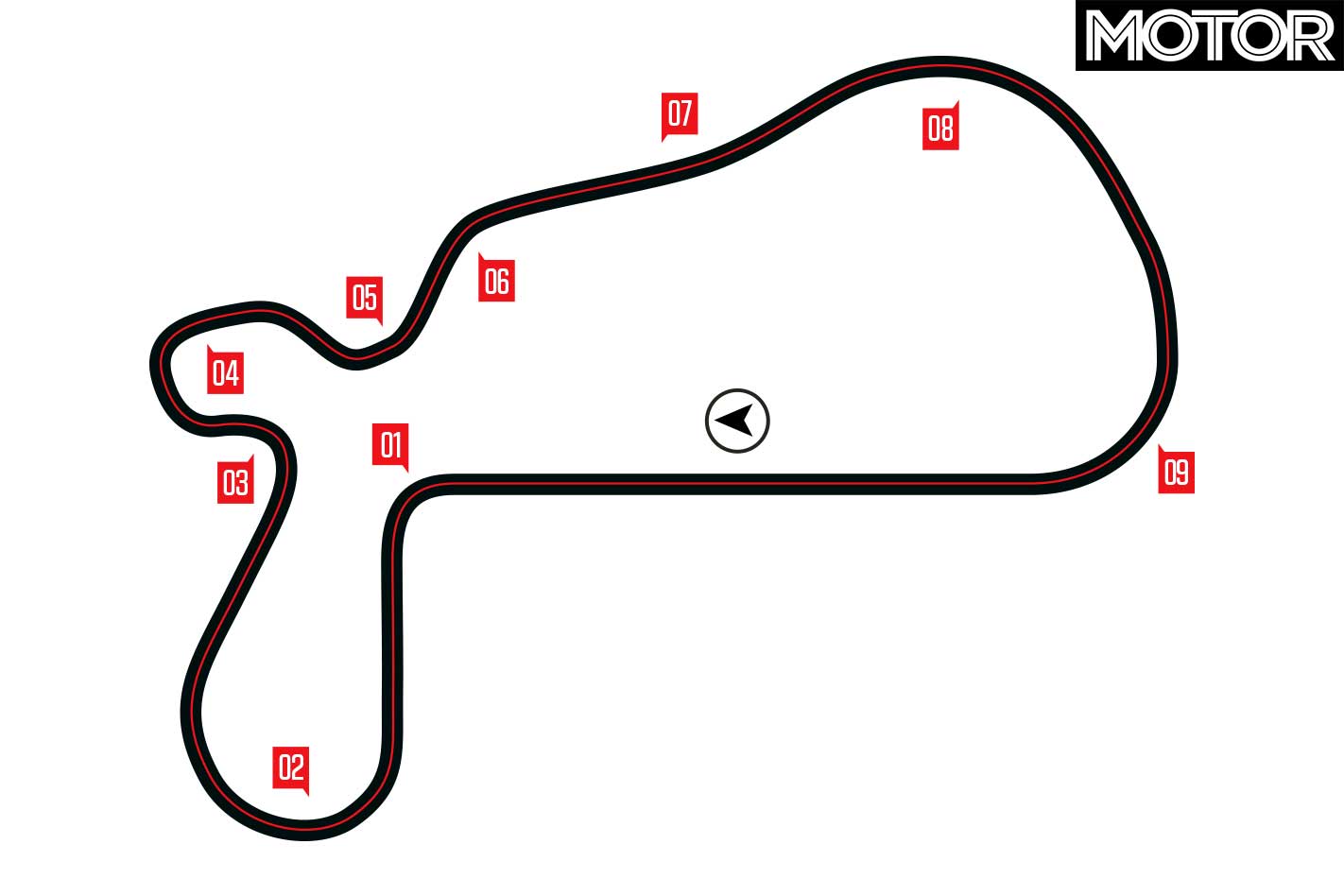
The Start: Turn 1 Braking from 225km/h in the RC F but not too much, leaning into the sticky Michelins and carrying a lot of speed into an early apex. Cracking the throttle aggressively and early as it opens up on exit, letting the car run right out Apex speed: 119km/h
Turn 2 Fast entry, this one goes on, and on, and on. Bumpy, requiring patience and a steady throttle, you could make a cup of tea in here it’s so long. Slightly blind exit, after a few laps you’ll figure out where you can pin the throttle Apex speed: 134km/h
Turn 3 Careful not to brake too late lest the heavy RC F’s front end ploughs wide. Goes up-hill on exit; use this to your advantage Apex speed: 85km/h
Turn 4 Brain says flow the car to the outside of track but actually hug the inside for the run back down the hill Apex speed: 81km/h
Turn 5 Careful of RC F’s fat bum under braking, keep the car a bit straight on the picks, keep ‘in’ and sacrifice exit for Turn 6 Apex speed: 93km/h
Turn 6 Right from the outside aim as straight across the corner as possible. Take a deep breath and hold it flat over a bumpy crest; track drops away but opens on exit, you’ll be okay Apex speed: 142km/h
Turn 7 Distraction as you try to remember Turn 8 Apex speed: 206km/h
Turn 8 Grow some balls. Bumps upset RC F Track Edition and rock your confidence but with bravery you can carry a lot of speed and make up time Apex speed: 184km/h
Turn 9 Corner that a lot of people crash on. Invites you to carry in a lot of speed but then tightens. But critical to get it right to maximise speed for the 800m front straight; feel like a hero when you nail it Apex speed: 135km/h

